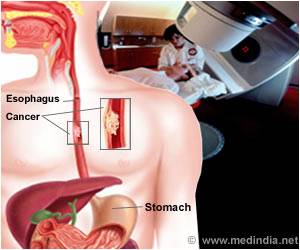American scientists have developed a new minimally invasive method of treating cancer and they hope to begin clinical trials on individuals with prostate cancer soon.
American scientists have developed a new minimally invasive method of treating cancer and they hope to begin clinical trials on individuals with prostate cancer soon.
The development of the process called irreversible electroporation (IRE) is a result of the efforts of Virginia Techbiomedical engineer Rafael V. Davalos and University of California bioengineering professor Boris Rubinsky.For decades, researchers have been aware of electroporation increasing the permeability of a cell from none to a reversible opening to an irreversible opening. Given that irreversible concept kills the cells, Davalos and Rubinsky used it to target cancer cells.
"IRE removes tumours by irreversibly opening tumour cells through a series of short intense electric pulses from small electrodes placed in or around the body," said Davalos, who is the 2006 recipient of the Hispanic Engineer National Achievement Award for Most Promising Engineer or Scientist.
"This application creates permanent openings in the pores in the cells of the undesirable tissue. The openings eventually lead to the death of the cells without the use of potentially harmful chemotherapeutic drugs," he added.
The researchers successfully ablated tissue using the IRE pulses in the livers of male Sprague-Dawley rats.
"We did not use any drugs, the cells were destroyed, and the vessel architecture was preserved," Davalos said.
Advertisement
The researchers said that IRE allowed them to adjust the electrical current and reliable kill the targeted cells.
"IRE shows remarkable promise as a "minimally invasive, inexpensive surgical technique to treat cancer. It has the advantages that it is easy to apply, is not affected by local blood flow, and can be monitored and controlled using electrical impedance tomography," he added.
The researchers said that they would continue to advance the promising method to treat cancer, which is being featured in a special issue of Technology in Cancer Research and Treatment.
Source-ANI
LIN/S










